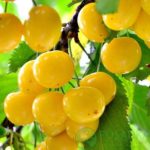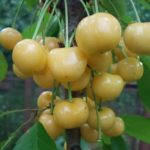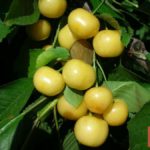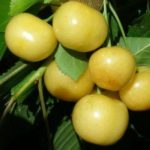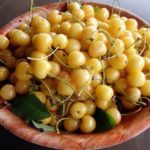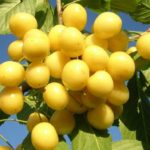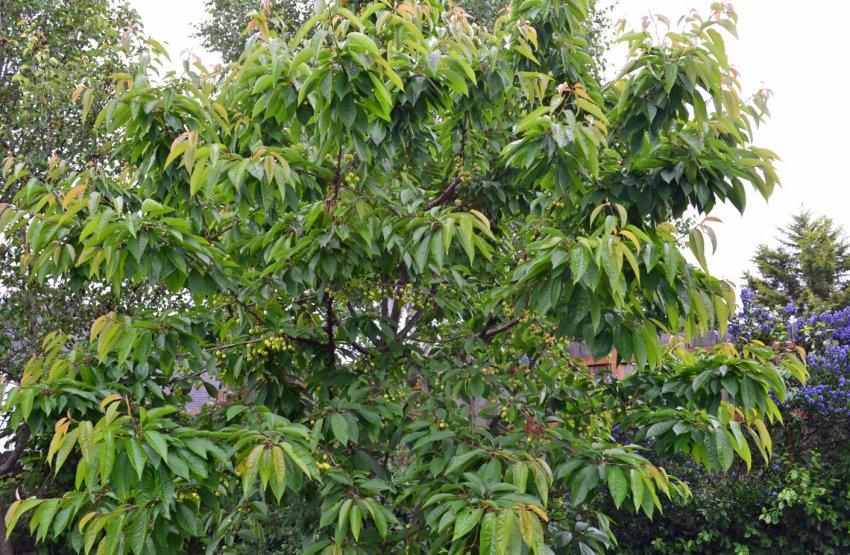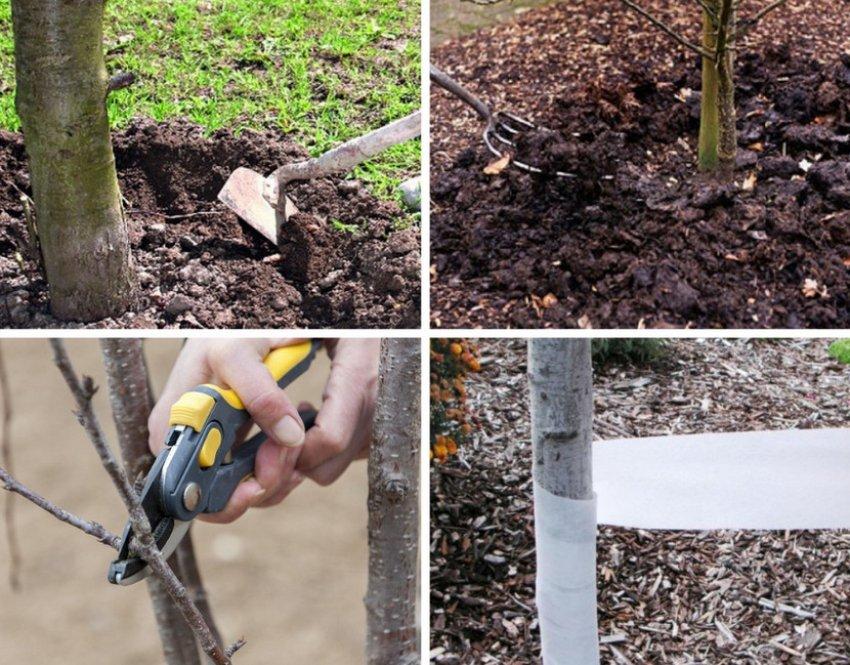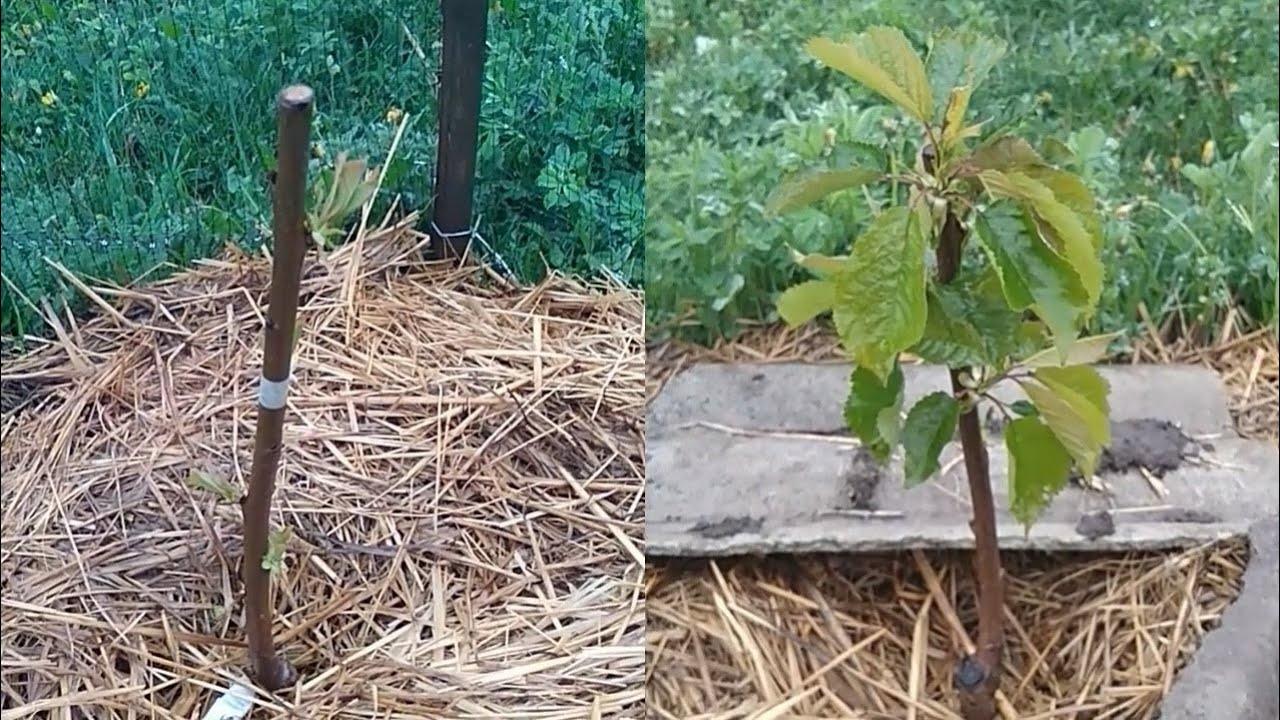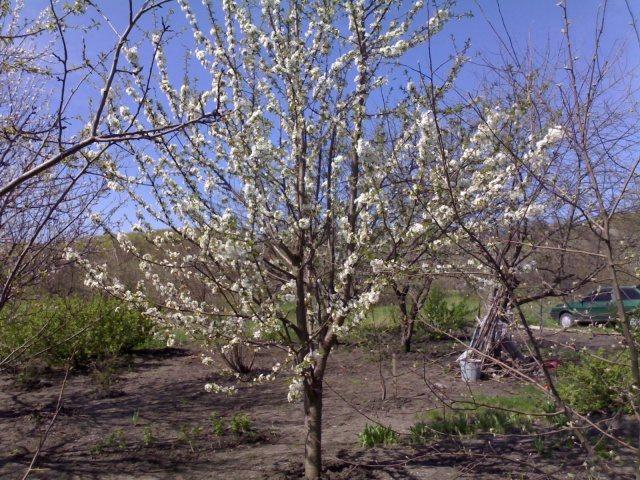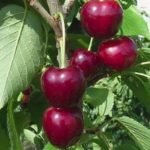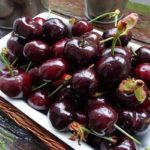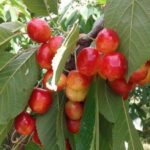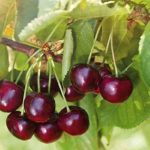Cherry trees are found quite often on the plots of domestic gardeners. These berries are among the first to ripen with the arrival of warm summer days and allow you to saturate the body with vitamins. The fruits are not only consumed fresh, but also preserved for the winter. When choosing trees to place on your plots, you should pay attention to the description of the cherry variety Dachnitsa. This variety has many advantages and is an early ripening berry.
- History of selection
- Description and characteristics of the Dachnitsa variety
- Advantages and disadvantages
- Subtleties of growing crops
- Selection of location and planting material
- Planting scheme
- Plant care rules
- Watering
- Fertilizers
- Pruning and crown formation
- Preparing for winter
- Diseases and pests
- Collection and storage
History of selection
The yellow cherry variety Dachnitsa was bred by specialists from the Ukrainian Institute of Irrigated Horticulture, located in the city of Melitopol. The author of the first seedling was Turovtsev N.I., who pollinated the Napoleon white variety with a mixture of pollen from 12 different varieties of cherries.
The new variety passed state tests in 1984. According to their results, cherries are recommended for cultivation in the Astrakhan region and the North Caucasus region. However, the variety has acceptable indicators of drought and frost resistance, so it is also planted by summer residents in other areas.
Description and characteristics of the Dachnitsa variety
The Dachnitsa variety belongs to varieties with yellow colored fruits. They are less allergenic than red cherries, which is why they are especially popular.
Description and general characteristics of the cherry variety Dachnitsa:
- ripening time - from June 15-25 (depending on the region);
- the crown of the tree is spreading and has medium density;
- yield - up to 50 kg per tree, subject to proper care and fertilization;
- frost resistance - up to -30 degrees;
- cherry height - up to 3.5 meters;
- one berry weighs about 11 grams, its shape is round;
- the taste of the fruit is sweetish with slight sourness, the pulp is juicy, creamy in color, the skin is yellow;
- taster rating - 4.6 points;
- the bone is small in size and can be easily separated from the pulp;
- the variety has average resistance to damage by pathogens of fungal diseases;
- the fruits do not crack, even if it rains for a long time;
- the first fruiting is observed 4 years after the seedling is placed on the site;
- flower buds are not afraid of sudden spring frosts;
- To obtain the harvest declared by the breeders, it is necessary to plant a number of pollinators, since the variety is self-sterile; cherries such as Drogana yellow, Talisman or Franz Joseph are suitable.
Advantages and disadvantages
Gardeners who have been growing the Dachnitsa variety on their plots for several years have identified several strengths of cherries that distinguish them from other varieties.
The advantages include:
- taste of berries (sweet with slight sourness);
- good appearance of the fruit and high transportability;
- the ability to easily separate the pit from the pulp;
- low probability of infection by a parasite such as cherry fly;
- immunity to high humidity - the berries do not crack, even if it rains frequently;
- average resistance to fungal pathologies, in particular to coccomycosis and moniliosis;
- high yield from one cherry;
- the possibility of using berries both for fresh consumption and for preparing for the winter in the form of compotes and jam.
The Dachnitsa variety has significantly fewer disadvantages than advantages; gardeners include the need to plant pollinators nearby and thin out the crown annually, otherwise the yield falls.
Subtleties of growing crops
In order for the cherry variety to demonstrate the qualities declared by the breeders, it is necessary to choose the right place for the young seedling and plant it, adhering to a certain algorithm.
Selection of location and planting material
It is recommended to purchase seedlings of the Dachnitsa variety in nurseries; in spontaneous markets there is a possibility of getting a fake. Make sure that the roots are alive and free from signs of disease and pests.
It is better to purchase a specimen for planting that is one or two years old. The seedling must have at least 3 branches with buds.
It is recommended to place purchased seedlings in a well-lit place; in the shade, the fruits will form small and sour. Groundwater should be located at least 1.5 meters from the ground surface. Select a site on a slight elevation, but protected from through cold winds. For good fruiting, cherries need fertile soil with a neutral reaction.
Planting scheme
Planting holes are made in a checkerboard pattern, the recommended distance between trees is 3.5 meters.
Planting of seedlings is carried out according to the following algorithm:
- Make holes 60 cm deep and 80 cm wide.
- A layer of fertile soil is poured at the bottom of the hole and a support is immediately installed so that the young seedling is not broken by the wind.
- The tree is placed in the middle of the hole and the roots are carefully straightened in different directions.
- Cover the seedling with prepared soil and fertilizers and tamp it down a little to fill all the voids.
- The tree is tied to a wooden support and a hole is made for watering.
- The planted cherries are irrigated abundantly and a layer of organic mulch is laid.
Plant care rules
After completing the planting work, the Cherry Summer Resident will be given competent care, which includes applying nutritional supplements, watering, pruning broken and diseased branches and forming the crown.
Watering
The Dachnitsa variety will need abundant irrigation three times a season - in the spring, before the flowers bloom, during the formation of berries and before preparing for the cold. Watering is carried out with cold water, at intervals of a week, spending 20 liters of water on each tree.
Fertilizers
Without adding nutrients, it will not be possible to harvest a high harvest. Cherries are fed 3 times per season - in May, July, after harvest, and in August.
Pruning and crown formation
The first pruning begins when the seedling reaches a height of 70 cm. After this, the shoots and lower branches are removed. When shaping the crown, remember that on the second and third tiers there should be one less branch than on the first.
Preparing for winter
Shelter is required for young trees; mature crops are resistant to low temperatures. The trunk is insulated using spruce spruce branches or agrofibre.
Diseases and pests
This variety is quite rarely damaged by pests and diseases of fungal fruit crops. If this does happen, purchase one of the following drugs from the garden store to treat Dachnitsa cherries - “Skor”, “Signum”, “Quadris”, “Topaz”.
Collection and storage
They start collecting the fruits of the fruit tree on the 20th of June. The berries are stored in the refrigerator for a week, frozen for the winter, or made into compotes.

